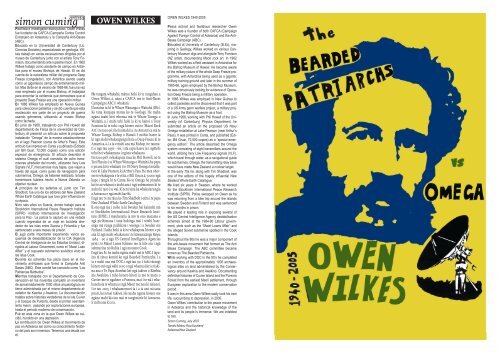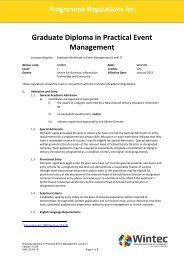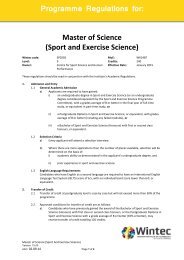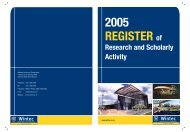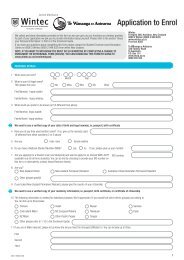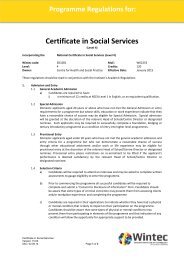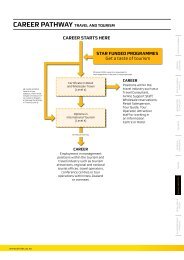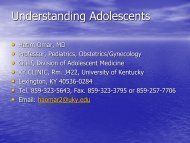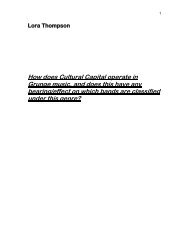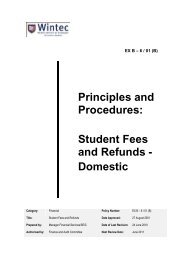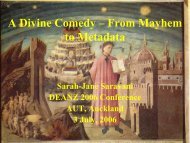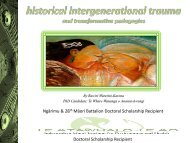artistakaterina matairaAhora, Ralph a sus 76 años es uno de los principalesartistas de Nueva Zelanda con reputacióntanto internacional como nacional. Su obra es unade las adquisiciones mas valuadas en muchas galeríasneozelandesas y en colecciones privadas.De ascendencia maori, él creció en una remota villajunto al mar en la costa oriental de la isla del nortede Nueva Zelanda. La villa se llama Mitimiti, quesignifica ‘lamer’, nombre que recuerda lo amargode las batallas tribales cuando los Ngapuhi cayeronsobre el pequeño asentamiento y masacraron a sugente. En la playa esta en pie una roca grande yprominente en la cual parte de la batalla ocurrió.Se dice que los victoriosos Ngapuhi lamieron lasangre derramada de sus víctimas en esa roca.Este horrendo evento, dicho y vuelto a decir porgeneraciones, pudo muy bien haber influenciadoel total rechazo a la violencia a la generación deRalph, especialmente la violencia justificada porsucesivos gobiernos del mundo contra la humanidady el medio ambiente.Sus pinturas de protesta comenzaron cuando estudiabaen la Escuela central de Arte en Londres.Fue durante el período de la guerra fría contraRusia. El gobierno de EEUU había persuadido yconsiguió un arreglo con el gobierno británico parapermitir la construcción de bases para misiles en elReino Unido, de donde los misiles Polaris podíanser lanzados contra un posible ataque ruso. Esefue un volátil período de marchas de protesta yde una serie de expresiones públicas de repudioa las políticas internacionales. En el lienzo, Ralphcapturó la furia, el miedo y la anticipada violenciade la inminente guerra en su serie Polaris de granformato.Nacido en la fe católica de Roma y educado comointerno en una escuela católica-romana, no debesorprender que Ralph use el crucifijo como símbolorecurrente de expresión contra la guerra y lasvidas sacrificadas de hombres y mujeres jóvenesen batallas. Es más, uno de sus hermanos muriópeleando y su cuerpo quedó en Sangrio, Italia.Después de visitar el cementerio en Sangrio ycontemplar la tumba de su hermano, realizó unaserie de pinturas llamadas “la Serie de Sangrio”,estos trabajos están pintados en sombríos tonosgrises y reflejan las líneas angulares y encrestadastexturas de las tumbas. El sentimiento de estaobra es de profunda tristeza.La intrusión de los Estados Unidos en los asuntosdel Medio Oriente también han sido alimento parael pincel de Ralph. En estas obras los colores delhumo, fuego y explosiones se combinan con palabrasy símbolos arábicos que expresan su continuaprotesta contra la guerra.En su propia tierra, Nueva Zelanda, él es igualmentefuerte en sus protestas contra acciones delgobierno que ponen en peligro el medio ambientey los recursos naturales de la nación. A su regresode sus estudios en el exterior, Ralph se asentó enPort Chalmers, Dunedin. Desde ahí defiende y protegeferozmente la vida marina que abunda en lasaguas de la Isla del Sur y la bahía en donde vive.Cuando las autoridades locales quisieron construiruna fundidora de aluminio en un sitio cercano a labahía, otra serie de trabajos inspirados en el tema,salieron a la luz.Mientras la mayor parte de su obra es de protesta,oscura y no fácil de entender, también nos habladel profundo sentimiento que Ralph tiene por lasantidad de la vida en todas sus formas.RALPH HOTEREKua 76 tau nei te pakeke o Ralph, ko ia tētahi o ngā tino tohungawhakairoiro o Aotearoa, kua horapa hoki tōna rongoki ngā tōpito o te ao. He tino taonga āna mahi ki ngā wharewhakaaturanga toi me te hunga kohi whakairoiro.I pakeke mai a Ralph i te papa kāinga ō ona tīpuna i te tahahauāuru o te Ika a Māui, o Aotearoa. Ko Mitimiti te ingoa otaua kāinga, he ingoa whakamaumahara i ngā pakanga ā-iwime te hekenga iho o Ngāpuhi ki te patu i te hapu o Ralph.Kei te onepū e tū ana tētahi toka nui, koia i tū i waenga o ngāhoariri o te pakanga. E ai ki ngā kōrero, i mitimitia e ngā toa oNgāpuhi te toto o te hunga mate i maringi ki taua toka.Nā tēnei kōrero wetiweti, koia i whakahuahuatia kia rongongā taringa o ia whakatipuranga, o ia whakatipurangi i tokomai ai i roto i a Ralph tana kore whakaae ki ngā mahi ririhaukatoa, kore rawa hoki e whakaae ki ngā mahi kōhuru i te hungatangata me te wheiao e whakaaetia ana e ngā kāwanatangao te ao.I toko tuatahi mai ēnei whakaaro ōna i āna whakairoiro i tewā i te Central School of Art o Rānana, a ia e kura ana. Koirā tewā whakatumatuma ai a Rūhia rāua ko Amerika. I whakaaetiae te kāwanatanga o Ingarangi kia whakatutū papa kurupere ngā Marikena hei kurukuru mā rātau ki ngā Rūhia inapakanga mai rātau. Koirā hoki te wā i kaha te takahi whenuame te kauwhau a te hunga kore whakaae ki terā kaupapa mengā kaupapa manene a te kāwanatanga. Ko Ralph tērā e hopuana i te pukuriri, te mataku me te wehi ki ngā pakanga i roto iāna whakairoiro. I tapaina e ia ēnei mahi ko te Polaris Series.Nā tana tipu mai pea i roto i te Hāhi Katorika i tiki atu ai aRalph i te rīpeka hei tohu auau māna mō ngā pakanga o te aome te matemate o te hunga tangata i roto i aua pakanga. Kotana tuakana tonu tētahi i hinga i te pakanga tuarua o te ao, itanumia hoki ki Sangrio, Itāria. I tae atu a Ralph ki te moengaroao tana tuakana whakamomori ai. Nā tērā ka puta hoki hewhakairoiro anō. I tapaina ēnei whakairoiro ko te SangrioSeries, e mau ana hoki i konei ko ngā tūāhua kiwikiwi, konae,kōputaputa, kōhakihaki o ngā pohatu. Mau ana ano te tinopōuri o te whatumanawa.He take whāngai anō i te taitai whakairoiro a Ralph tērā ote kuhu atu o ngā Marikena ki ngā take nui o ngā whenuaWaenga Rāwhiti. I konei ka mahi ngātahi ngā kupu tauiwi,ngā kupu Arabic me ngā tae o te kauruki, te pohu me te murao te ahi hei whakaputa i te tino kino o Ralph ki aua pakanga.I te hau kāinga, i Aotearoa, kaha anō te whakahē a Ralph i ngākaupapa tūkino i te whaiao, a ngā kaunihera. I tana hokingamai i rāwāhi i noho a Ralph ki Koputai, Otepoti. Kaha tanawhawhai kia ora tonu ngā ika me ngā mātaitai o te Waipounamume te whanga o Koputai. Nō te putanga o te kaupapawhakatū whare tahu konumohe a te kaunihera o taua takiwā,ka puta anō ngā whakairoiro whakahē a Ralph. Kīhai tauawhare i tū.He whakahē i ngā mahi tūkino a te hunga kāwanatanga tenuinga o ngā whakairoiro a Ralph. Ahakoa te pōuriuri me teuaua o te kite marama atu he aha te tikanga o ana whakairoiro,koia tērā te tino tikanga, arā, ko te tapu o te toiora o ngāmea katoa.Now 76 years old Ralph is one of the foremost artistsof New Zealand with both a national and internationalreputation. His works are a valued acquisitionin most New Zealand art galleries and manyprivate collections.Of Maori descent he grew up in a remote seasidevillage on the west coast of the North Island ofNew Zealand. The village is called Mitimiti, meaning‘to lick’, a name which recalls the bitterness oftribal battles when the Ngapuhi descended on thequiet settlement and slaughtered its people. On thebeach stands a large and prominant rock on whichpart of the battle ensued. It is said that the Ngapuhivictors licked the spilled blood of their victims fromthis rock.This horrendous event, told and retold through thegenerations, may well have influenced Ralph’stotal rejection of all violence, especially the violencecondoned by successive world governmentsagainst humanity and the environment.His protest paintings began when he was studyingat the Central School of Art in London. It was duringthe period of the cold war with Russia. The governmentof the USA had pursued and won an agreementwith the British government to permit the buildingof missile bases in the United Kingdom, fromwhich Polaris missiles could be launched against apossible attack by the Russians. That was a volatileperiod of protest marches and public expression ofstrong disagreement with government foreign policy.On canvas Ralph captured the anger, the fearand the anticipated violence of impending war inthe large works, of the Polaris Series.Born into the Roman Catholic faith and educatedin a Roman Catholic boarding school it is not surprisingthat Ralph should use the crucifix as a recurringsymbol of expression against war and thesacrificed lives of young men and women in battle.Indeed, one of his bothers was killed in action andburied in Sangrio, Italy. After visiting the cemeteryat Sangrio and contemplating his brother’s grave,a series of paintings resulted. Called the SangrioSeries, these works are painted in sombre tonesof grey and reflect the angular lines and encrustedtextures of tombstones. The mood of the works is adeep and ineffable sadness.The ongoing intrusion of America in the affairs ofthe Middle East has also been fuel for Ralph’spaintbrush. In these works the colors of smoke, fireand explosion combine with words and Arabic symbolsto express his continuing protest against war.On the home front in New Zealand he is equallystrong in his protests against the actions of localgovernment that threaten the environment andthe natural resources of the nation. On his returnfrom study abroad Ralph settled in Port Chalmers,Dunedin. He is fiercely protective of the marine lifethat abound in the waters of the South Island andthe harbour where he lives. So when the local authoritiesplanned to build an aluminum smelter on asite near the heads of the harbour another series ofworks was triggered.While most of his paintings are works of protest,are often dark and not easily understood. They infact tell us how deeply Ralph feels for the sanctityof all life.Katerina Te Heikoko Mataira, August 1 2007Hamilton/Kirikiriroa, Aotearoa/New Zealand
simon cumingPacifiista e investigador escrupuloso, Owen Wilkesfue fundador de CAFCA (Campaña Contra ControlExtranjero en Aotearoa) y la Campaña Anti-Bases(ABC).Educado en la Universidad de Canterbury (Lic.Ciencias Sociales), especializado en geología, Wilkestrabajó en varias excavaciones dirigidas por elmuseo de Canterbury junto con el artista Tony Fomison,documentando arte rupestre maori. En 1962Wilkes trabajó como asistente de campo en Antárticapara el museo Bishops de Hawaii. El se diócuenta de la naturaleza militar del programa DeepFreeze (congelador), con Antártica siendo usadacomo un gigantesco campo de entrenamiento militar.Mas tarde en el verano de 1965-66, fue una vezmas empleado por el museo Bishop, él trabajabapara encontar la evidencia que demostrara que elproyecto Deep Freeze era una operación militar.En 1966 Wilkes fue empleado en Nueva Guineapara coleccionar parásitos y se dió cuenta que estarecolección era parte de un proyecto de guerrausando gérmenes, utilizando al museo Bishopcomo fachada.En junio de 1968, trabajando con Phil Howell deldepartamento de Física de la universidad de Canterbury,él presentó un artículo sobre la propuestainstalación “Omega” de la marina estadounidenseen el lago Pearson (cerca de Athur’s Pass). Esteartículo fue impreso en Canta y publicado (Editadopor Bill Guar, 72,000 copias) como una ediciónespecial de emergencia. El articulo describía alsistema Omega el cuál consistía de ocho transmisoresalrededor del mundo, utilizando Very LowSignals (VLF,) frecuencias muy bajas, que viajan através del agua, como guías de navegación parasubmarinos, Omega, de haberse realizado, la basetransmisora hubiera hecho a Nueva Zelanda unobjetivo nuclear.A principios de los setentas el, junto con TimShadbolt, fue uno de los editores del New ZealandWhole Earth Catalogue que tuvo gran influencia ensu época.Vivió seis años en Suecia, donde trabajó para elStockholm International Peace <strong>Research</strong> Institute(SIPRI) -Instituto Internacional de Investigaciónpara la Paz-. La policía lo capturó en una redadacuando regresaba de un viaje en bicicleta alrededorde las islas entre Suecia y Finlandia y fuesentenciado a seis meses de prisión.El jugó parte importante exponiendo varios esquemasde desestabilización de la CIA (AgenciaCentral de Inteligencia de los Estados Unidos), dirigidosal Labour Govermnet, como el “Maori LoanAffair” y el supuesto submarino soviético visto enlas Islas Cook.Durante los ochentas fue pieza clave en el movimientoanti-bases que formó la Campaña AntiBases (ABC). Este comité fue conocido como “LosPatriarcas Barbudos”.Mientras trabajaba con el Departamento de Conservaciónen los noventas completó un inventariode aproximadamente 1000 sitios arqueológicos entierra administrada por el mismo departamento alrededorde Kawhia y Awakino. La documentacióntrataba sobre historias verdaderas de la isla Cuviery el bosque de Pureora, desde el primer asentamientomaori, pasando por exploraciones europeas,hasta el periodo moderno de conservación.Fué en esta zona en la que Owen Wilkes se suicidó,hundido en una depresión.La contribución de Owen Wilkes al movimiento depaz en Aotearoa así como su conocimiento históricodel país son inmensos. Tenemos una deuda conél.artista OWEN WILKES 1940-2005OWEN WILKESHe tangata whakahē, mātau hoki ki te rangahau aOwen Wilkes, ā, nāna a CAFCA me te Anti-BasesCampaign (ABC) i whakatū.I kuraina ia ki te Whare Wānanga o Waitahā (BSc).Ko tana kaupapa matua ko te Geology. He mahangāna mahi kēri whenua mā te Whare Taonga oWaitahā, ā, i mahi tahi hoki ia ki te kaitoi a TonyFomison ki te tuhi i ngā kōrero mō te ‘Māori RockArt’. I te tau 1962 he kaimahi ia i te Antarctica mā teWhare Taonga Bishop o Hawaii. I mōhio haere iaki ngā mahi whakangungu hoia a Deep Freeze ki teAntartica, ā, i a ia e mahi ana mā Bishop i te raumatio ngā tau 1956 – 66, i āta rapu haere ia i ngētehitohu hei whakamana i ngōna whakaaro.I te tau 1968 i whakaputa rāua ko Phil Howell, nō teTari Physics i te Whare Wānanga o Waitahā, he pepae pā ana ki te whakatū i te US Navy Omega Installationki Lake Pearson, ki Arthur’s Pass. He mea ohorerete whakaputa e te etita, e Bill Gruar, ā, 72000 ngākape i tāngia ki te Canta. Ko te Omega he pūnahakei te ao whānui e ārahi ana i ngā submarines ki tenuku ki raro i te wai. Ki te tū tēnā ka whakararungiaa Aotearoa e ngā mahi karihi.I ngā tau 70 nā rāua ko Tim Shadbolt i etita i te pepaNew Zealand Whole Earth Catalogue.E ono ngā tau i noho ia ki Sweden hei kaimahi māte Stockholm International Peace <strong>Research</strong> Institute(SIPRI). I mauheretia ia mō te ono marama engā pirihimana i tana hokinga mai i tētehi haerengamā runga paihikara i waenga i a Sweden meFinland. I kaha hoki ia ki te whakaputa kōrero e pāana ki ngā mahi whakararu i te kāwanatanga Reipa1984 – 90 a ngā US Central Intelligence Agenciespērā i te Māori Loans Scheme me te kite atu i ngāsubmarine nō Ruhia i ngā moutere Cook.I ngā tau 80 he maha ngāna mahi mā te ABC. I tapainatā rātou komiti ko ngā Bearded Patriarchs. I aia e mahi ana mā DOC, i ngā tau 90, i tuhi rārangikōrero mō ngā wāhi 1000 o ngā whenua kēri e tiakinaana e Te Papa Atawhai kei ngā takiwā o Kāwhiame Awakino. I tuho kōrero hītori ia mō te motu oCuvier me te ngahere o Pureora, mai i te wā i whakanohoiate whenua e ngā Māori tae noa ki nāianei.I te tau 2005 i whakamomori ia i a ia anō nā tanapōuri, kei tēnei takiwā. He maha ngāna kōrero mengāna mahi kia tau mai te rangimārie ki Aotearoa.E mihi ana ki a ia.Peace activist and fastidious researcher OwenWilkes was a founder of both CAFCA (CampaignAgaisnt Foregin Control of Aotearoa) and the Anti-Bases Campaign (ABC).Educated at University of Canterbury (B.Sc), majoringin Geology, Wilkes worked on various CanterburyMuseum digs and alongside Tony Fomison(NZ artist), documenting Maori rock art. In 1962Wilkes worked as a field assistant in Antarctica forthe Bishop Museum of Hawaii. He became awareof the military nature of the whole Deep Freeze programme,with Antarctica being used as a giganticmilitary training ground and later in the summer of1965-66, again employed by the Bishop Museum,he was consciously looking for evidence of OperationDeep Freeze being a military operation.In 1966 Wilkes was employed in New Guinea tocollect parasites and he discovered that it was partof a US Army germ warfare project, a military projectusing the Bishop Museum as a front.In June 1968, working with Phil Howell of the University(of Canterbury) Physics Department, hesubmitted an article on the proposed US NavyOmega installation at Lake Pearson (near Arthur’sPass). It was printed in Canta, and published (Editor,Bill Gruar, 72,000 copies) as a “special emergencyedition”. The article described the Omegasystem consisting of eight transmitters around theworld, utilizing Very Low Frequency signals (VLF),which travel through water, as a navigational guidefor submarines, Omega, the transmitting relay basewould have made New Zealand a nuclear target.In the early 70s he, along with Tim Shadbolt, wasone of the editors of the hugely influential NewZealand Whole Earth CatalogueHe lived six years in Sweden, where he workedfor the Stockholm International Peace <strong>Research</strong>Institute (SIPRI). Police swooped on Owen as hewas returning from a bike trip around the islandsbetween Sweden and Finland and was sentencedto six months in prison.He played a leading role in exposing several ofthe US Central Intelligence Agency destabilisationschemes aimed at the 1984-90 Labour government,plots such as the “Maori Loans Affair” andthe alleged Soviet submarine spotted in the CookIslands.Throughout the 80s he was a major component ofthe anti-bases movement that formed as The AntiBases Campaign. The ABC committee becameknown as The Bearded Patriarchs.While working with DOC in the 90’s he completedan inventory of the approximately 1000 archaeologicalsites on land administered by the Conservancyaround Kawhia and Awakino. Documentingdefinitive histories of Cuvier Island and the PureoraForest from the earliest Maori settlement, throughEuropean exploration to the modern conservationperiod.It was in this area Owen Wilkes sadly took his ownlife, succumbing to depression, in 2005.Owen Wilkes’ contribution to the peace movementin Aotearoa and the historical knowledge of theland and its people is immense. We are indebtedto him.Simon Cuming, July 2007Tamaki Makau Rau/AucklandAotearoa/New Zealand


